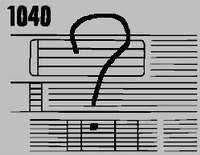TSA Tells Us Something...
 Last November, after near-universal coaching
from pilots unions and security experts, Congress figured out that,
in the last resort, it might not be a bad idea to let pilots arm
themselves, in order to protect the cockpits against September
11-style attacks.
Last November, after near-universal coaching
from pilots unions and security experts, Congress figured out that,
in the last resort, it might not be a bad idea to let pilots arm
themselves, in order to protect the cockpits against September
11-style attacks.
The Transportation Safety Administration -- whose official
position (as well as that of the President, Secretary Ridge, and
others in the ruling class, going back to the TSA's original capo,
John Magaw) was opposition to anyone other than Air Marshals'
having a chance for self-defense -- was given the task of
prescribing and administering training and tests to those certified
airline pilots who would volunteer and train on their own time.
Well, now it's five months later ("Pretty good, for government
work," joked TSA spokeswoman Heather Rosenker), and the first class
(of 48 pilots) is in training.
The training will last through Saturday, and conclude with
comprehensive testing.
 It's
not the first testing for these pilots, though. Not content with
understanding that pilots hold hundreds of lives in their hands all
the time, the TSA employed "experts" to conjure up some additional
psychological tests. These industrial psychologists are the same
folks who made up the tests for screeners, although the criteria
were, of course, somewhat different. (One difference, even when
this class is compared to future classes, is that these particular
48 were nominated by ALPA and COPA [that's what they said: "COPA"
-- we're still checking on that one --ed.]; future classes will be
drawn from a more-open applicant pool of active cockpit crew.)
It's
not the first testing for these pilots, though. Not content with
understanding that pilots hold hundreds of lives in their hands all
the time, the TSA employed "experts" to conjure up some additional
psychological tests. These industrial psychologists are the same
folks who made up the tests for screeners, although the criteria
were, of course, somewhat different. (One difference, even when
this class is compared to future classes, is that these particular
48 were nominated by ALPA and COPA [that's what they said: "COPA"
-- we're still checking on that one --ed.]; future classes will be
drawn from a more-open applicant pool of active cockpit crew.)

Next, the prospective volunteer had to go through
another background check, with generally the same
"hoops" to jump through, that regular federal LEOs get. Details
were not available from the TSA. (Presumably-similar qualifications
are regularly posted in the "employment" sections of the federal
Marshals, Secret Service, FBI, BATF, and the myriad other federal
police sites.)
 After
completing the 48-hour course (more hours than a senior Captain
might work in several weeks), the volunteers are tested in the
basics, and given self-defense training; and rigorous marksmanship
testing (although the exact distances at which their shooting
skills were to have been tested were not mentioned).
After
completing the 48-hour course (more hours than a senior Captain
might work in several weeks), the volunteers are tested in the
basics, and given self-defense training; and rigorous marksmanship
testing (although the exact distances at which their shooting
skills were to have been tested were not mentioned).
Upon graduation, the volunteers will be deputized as "Federal
Flight Deck Officers," and they will be charged with
protecting the cockpit (only). Air Marshals, if
any, are responsible for the rest of the plane. Everyone
outside that new cockpit door is on his/her own, regardless
the skill level, training, credentials, and deputization of the
front-seaters.
More...
 The original funding, to develop the training and
get the program started, was $500,000. Part of that money will
cover the pilots' approved weapons -- .40 caliber semiautomatic
handguns. [Glock 23 pictured; actual make/model of federal issue
wasn't known --ed.]
The original funding, to develop the training and
get the program started, was $500,000. Part of that money will
cover the pilots' approved weapons -- .40 caliber semiautomatic
handguns. [Glock 23 pictured; actual make/model of federal issue
wasn't known --ed.]
As soon as the pilots graduate, they'll be back in the cockpits
-- as soon as next week, depending on their schedules. Retraining
is somewhere down the road; we're unsure how often recertification
would be required, how much it will cost, who will be eligible --
and just what parameters will be tested.
The TSA told us that they're proud that they've 'met another
Congressional deadline;' and they wanted us to pass along that,
"TSA is taking every precaution they can, to train folks
appropriately, before they let somebody carry a
firearm."
[We hope the training is indeed 'appropriate;' yet we wonder
just what additional psychological tests would be required of those
professionals who already hold the keys to the airplanes. As for
'marksmanship' training, we hope that most of that includes how to
hang on to that .40 cal -- distances in a cockpit are so short that
any 'range' work would be effectively meaningless --ed.]
Note to front-seat ANN Readers: after your
training is complete, we'd love to hear from any
pilots who made it through -- or who didn't.
 ANN's Daily Aero-Term (04.26.24): DETRESFA (Distress Phrase)
ANN's Daily Aero-Term (04.26.24): DETRESFA (Distress Phrase) Aero-News: Quote of the Day (04.26.24)
Aero-News: Quote of the Day (04.26.24) ANN's Daily Aero-Term (04.27.24): Direct
ANN's Daily Aero-Term (04.27.24): Direct ANN's Daily Aero-Linx (04.27.24)
ANN's Daily Aero-Linx (04.27.24) Aero-News: Quote of the Day (04.27.24)
Aero-News: Quote of the Day (04.27.24)







